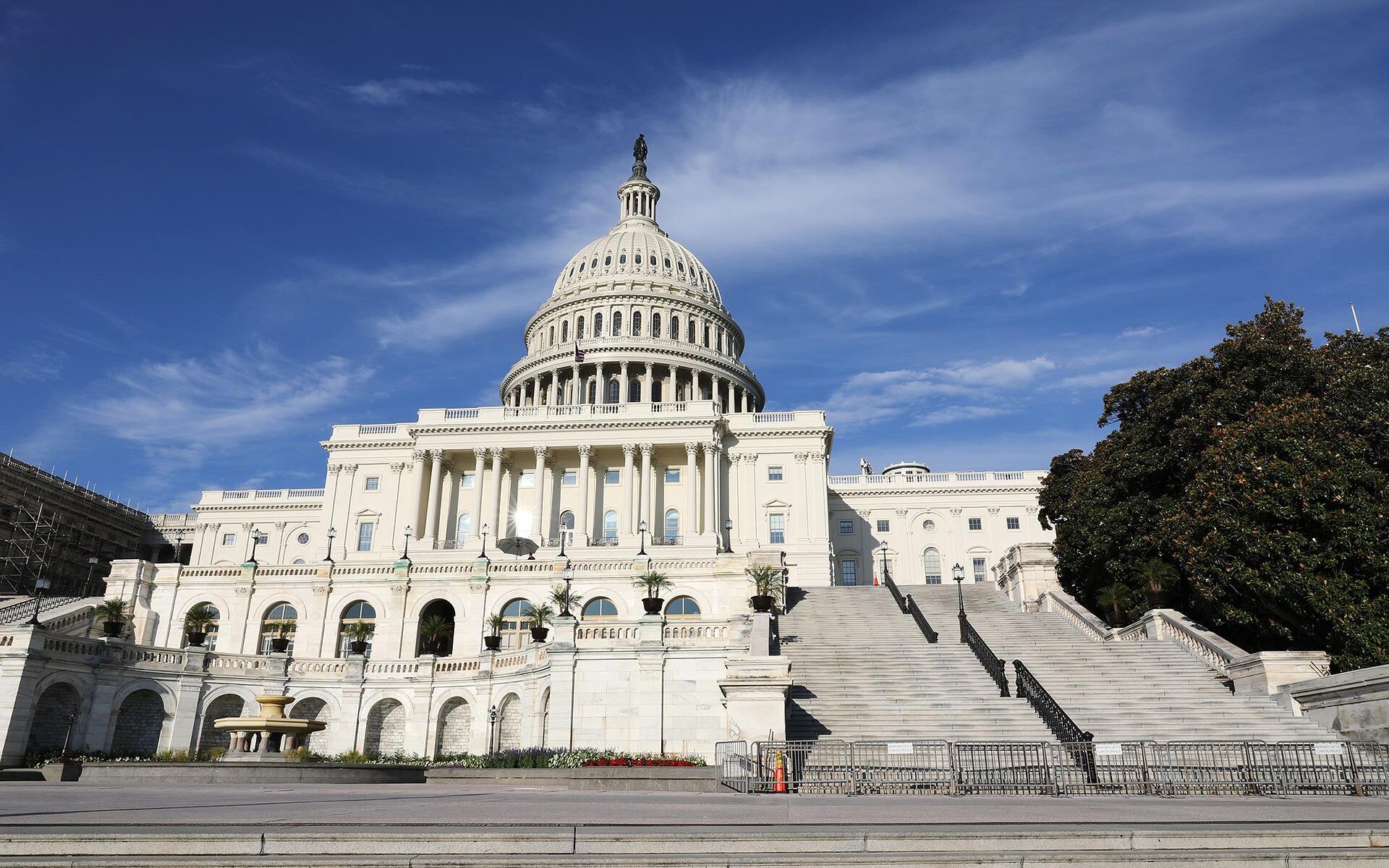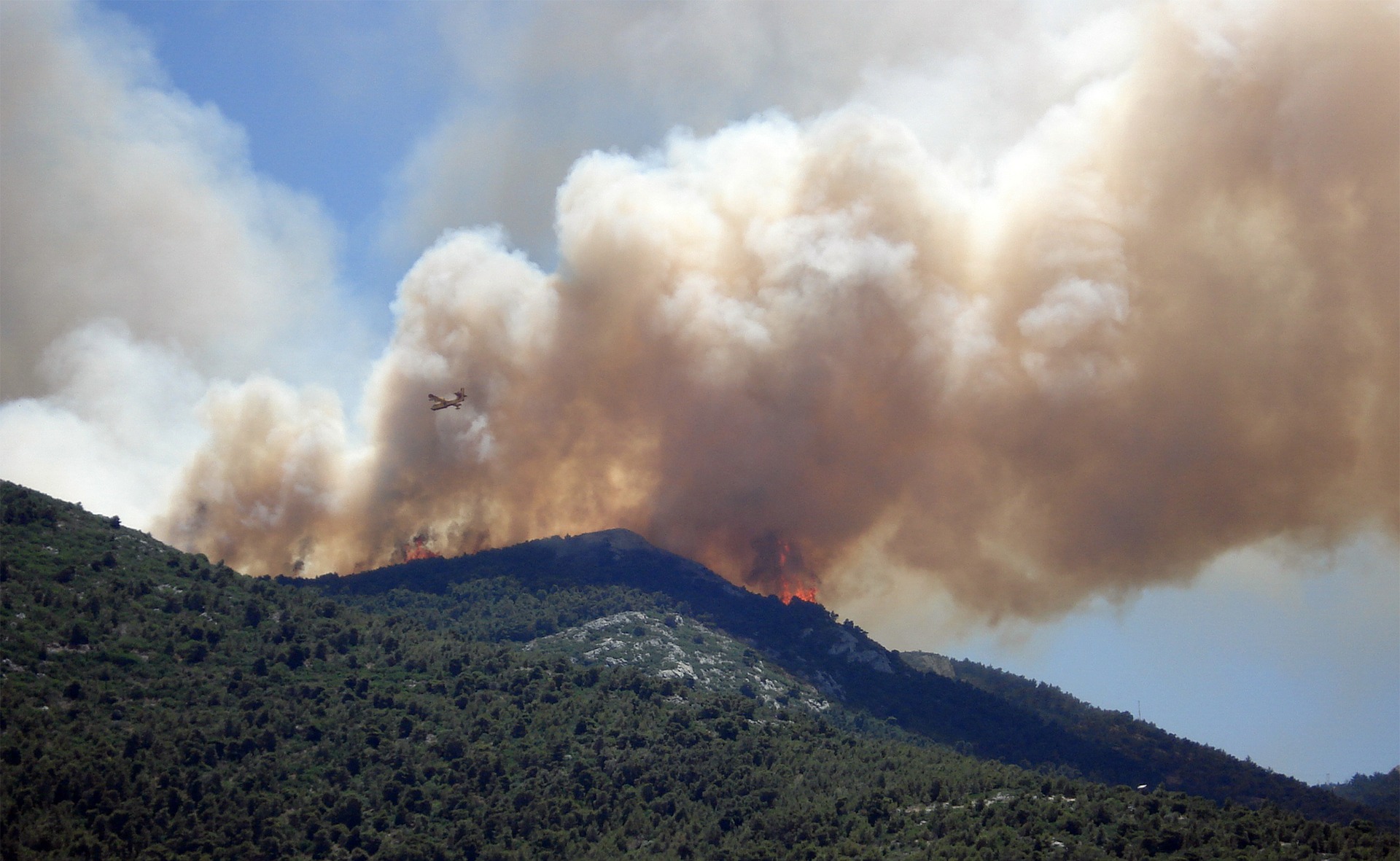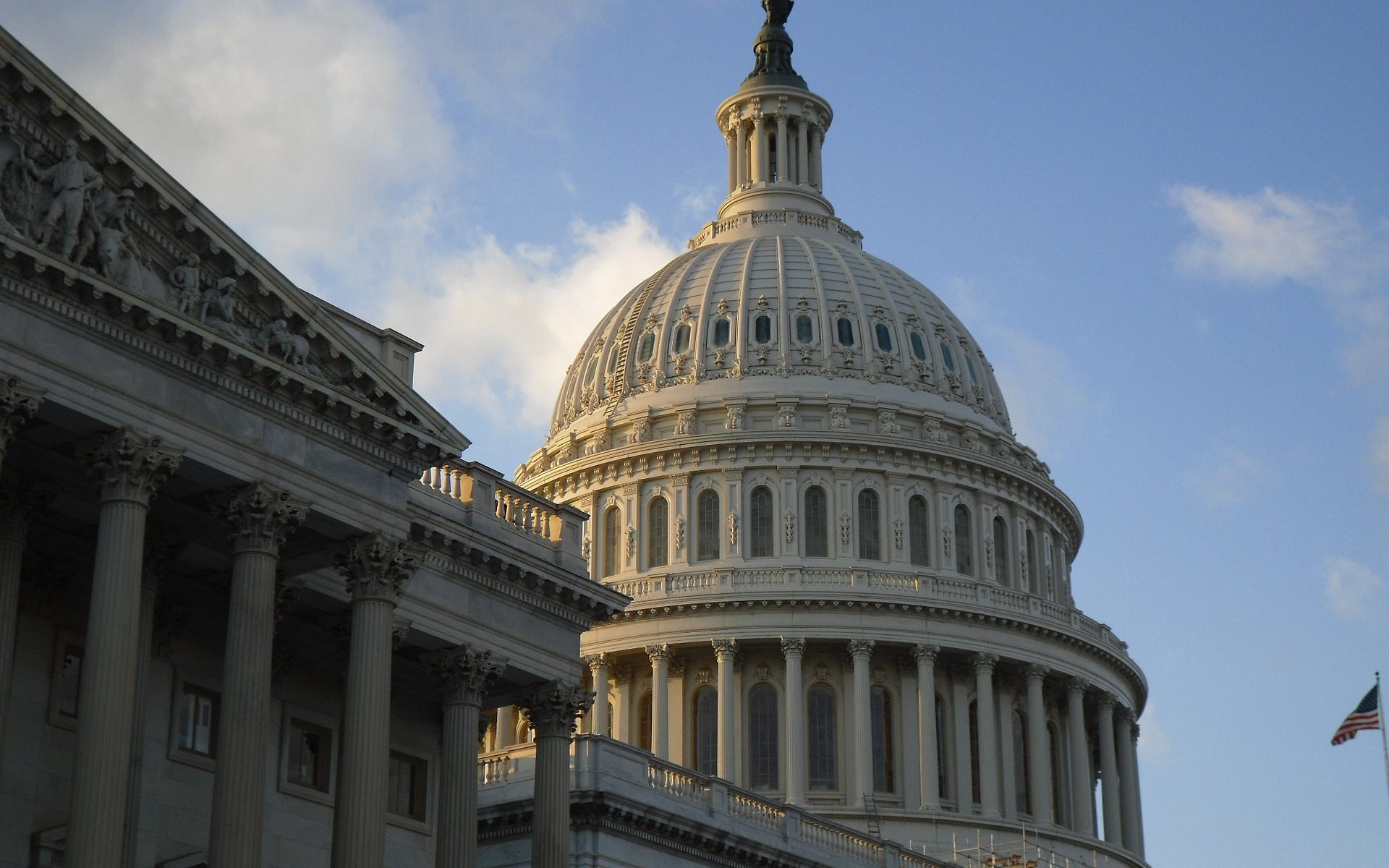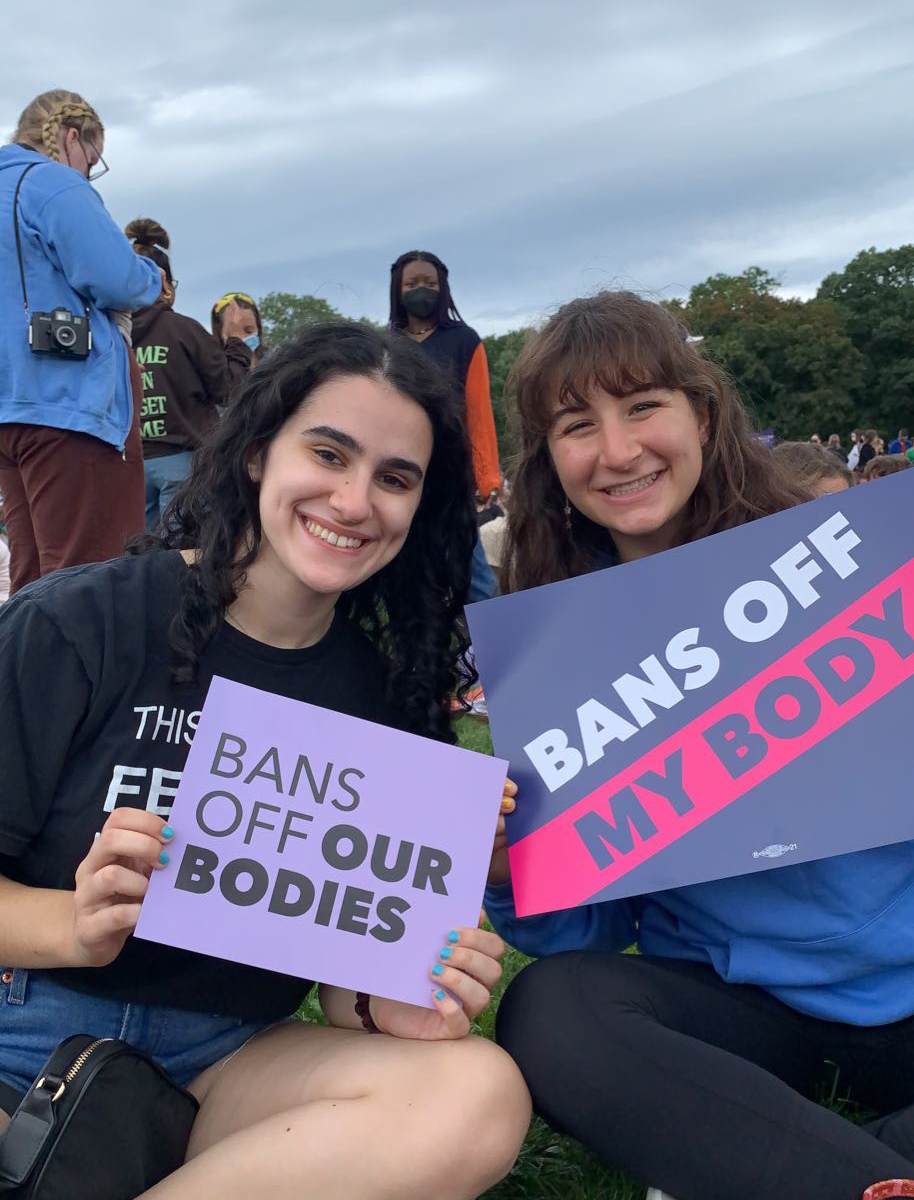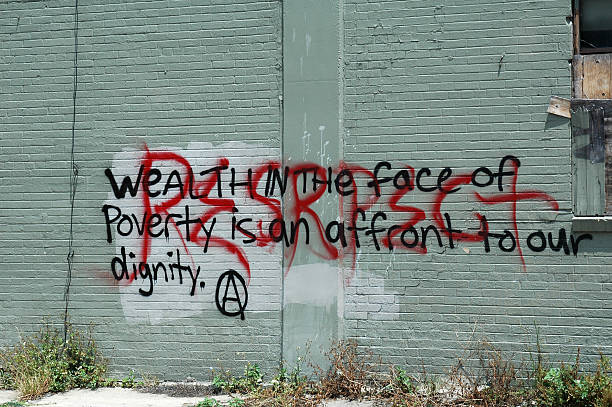Hi everyone! Please go check out my articles/support me at The Tufts Daily for current content. 🙂
Midnight Thoughts on Midnights
Midnights tells the story of “13 sleepless nights,” according to the queen herself, Taylor Swift. While on the surface this collection is a set of poppy-techno songs, the lyrics carry a much deeper philosophical significance with many of Swift’s songs detailing internal conflicts at midnight. Swift’s song Anti-Hero expresses some of her deepest self loathing and fears of consequences that may come from being such a prominent figure in the public sphere. With the chorus “It’s me, Hi, I’m the problem, it’s me,” Swift is taking ownership of her intrusive thoughts. Instead of letting others (the public) put that on her and shame her for her insecurities, she’s coming out first and saying it as a means of empowering herself.
Fans, “Swifties” as they self proclaim, have gotten a taste of Taylor Swift’s tendency to reclaim her own identity many times in albums like 1989, Reputation, Lover, Folklore/Evermore, and most recently, Midnights. What these albums all have in common is that each time Swift reinvented herself and her public image – because as she tells fans, she writes what she wants to when she wants to. Swift writes, “‘She’s laughing up at us from hell!’” With lyrics like this Swift uses irony and sarcasm to show the world she hears its criticism, and her lyrics reflect how little she cares about others’ opinions. How does this connect to philosophy? Swift is exhibiting what is termed egoism, a theory that claims “each person has but one ultimate aim: her own welfare” (Stanford Encyclopedia of Philosophy). Every time Swift releases a new album, it is on her own terms. She defies stereotypes by producing music of new genres each time; she doesn’t let her previous image constrain her creative horizons. Her motivation with each new album is to stay true to herself, and as her identity changes, her music changes with her. Swift’s constant changing between genres and identities takes her and her audience to new levels of emotional and philosophical introspection as with each song and era, her listeners can feel inspired to stay true to themselves and feel empowered as they deal with uncertainty and change in their lives.
What Do Young Americans Want — is Washington Listening?
For young people, much of the way we view the world revolves around identity. Politics and discussions of policy focus on questions such as, do I feel represented in books? Do I see people like me in politics? Are there communities of like-minded people at my college? Even my college major, international relations, has an identity concentration within the curriculum.
Despite this focus, when I watch the news, I don’t see or hear congressional representatives discussing issues that I and other young voters care most about. The other day, I listened to Lindsay Graham speak on CNN about Donald Trump’s potential 2024 campaign. He spoke of moving on from 2020 and said the election was not stolen. He then transitioned to what “people want to hear about.” According to Senator Graham, “People want to hear about how can you secure a broken border, [and] how can you stop rampant crime.”
Young voters recognize that immigration and crime are long-standing concerns, but we don’t see the world through that lens. In light of bigger ever more pressing problems related to the climate, public health, and ongoing war, these statements appear more like an excuse to push a socially conservative Republican platform on national TV.
Young voters have a different agenda, one centered on concerns about the environment, infringements on civil rights, public health, and reproductive and LGBTQ+ rights. For example, although climate change has dipped in importance to Americans since last year due to the war in Ukraine, most Americans still believe climate change needs to be addressed, either now or in the next few years, and for young voters, it is a top priority. These priorities might be to some extent reflected in what young people choose to study. According to DataUSA, 9339 students earned degrees in environmental science, and 9869 students earned degrees in environmental studies, adding up to almost 20,000 American students who earned degrees studying the environment in 2020 — a 5% increase from the number of degrees earned in 2019 in this field. In addition to the focus on climate change, 37,963 students earned degrees in public health in 2020, the year that brought us COVID; American students want to hear about public health policy. Furthermore, 13,616 students earned international relations and/or affairs degrees, and 48,597 students earned political science and/or government degrees in 2020; American students want to hear about fostering peace and efforts towards cooperation, not isolationism. By watching these patterns, Congressional representatives can gain real insight into what students want to hear in political discourse.
Elected representatives also need to stay in touch with opinion polls reflecting their young constituency. With the recent overturning of Roe v. Wade in June 2022, voters, particularly young voters, are angry. It may be the first time that some of these young voters recognize that congressional debates directly affect their civil rights, a fact which could lead to drastic changes in voter turnout for the 2022 midterm elections. Young female voters may be especially likely to vote for change; data shows that even for conservative women, overturning Roe v. Wade went too far in pushing the Republican political agenda. The Kaiser Family Foundation (KFF) did a poll in July 2022 with a population of American women between the ages 18-49 (reproductive and voting eligible age). Their findings show dramatic promise for a landslide midterm election result for the Democratic Party. According to KFF, “Among this population, there has been a fourteen percentage point increase in the share who say abortion will be ‘very important’ to their 2022 midterm vote (59% in February to 73% in July). In addition, six in ten women voters between 18 and 49 now say they are ‘more motivated’ to vote because of the Supreme Court’s decision.” These numbers represent an increase of almost 20% from three months ago before the final Roe v. Wade decision was handed down and suggests that women in this age cohort will cast their vote for those candidates who will protect abortion access. While this data does not exclusively represent young voters, it gives a glimpse into their priorities.
Why does this data matter? History has shown that the president’s party almost always loses ground during midterm elections, so for 2022, Republicans may expect to take control of the House and Senate under a Democratic president. Some even call it a curse — this pattern of an inevitable party switch has caused voters to perceive that midterm elections don’t matter or are unimportant, and consequently midterms generally have low voter turnout. The 2018 election holds the record for highest midterm voter turnout, yet only 50% of voters participated. Previously, the record for highest turnout was in 1966, when 48.7% of eligible voters turned out to vote in the midterms. In contrast, in the current political scenario, Harvard Youth Poll notes that 36% of young voters said they would be “definitely voting.” While this number may seem low, 37% of voters said the same in 2018, and we saw the highest midterm voter turnout rate in decades.
At this point, what is most important is that young voters realize that their vote matters. In order to focus our legislature on issues we deem important, we need to vote for representatives who will truly represent the concerns of young Americans and keep access to abortion, reproductive healthcare, and LGBTQ+ rights; prioritize climate change; and work towards creating a cooperative international system. It is only August, and we have the power to rally by November.
A Shooting on the 4th of July: An Unacceptable Price for American Freedom
I’ve been thinking about this article for a long time. I’ve been thinking about this article since 10 Black people were killed in a Buffalo supermarket, since 19 students and 2 teachers were shot dead at Robb Elementary school. I’m writing this article a few hours after at least 6 people died and 24 were injured at a 4th of July parade in Highland Park, Illinois. This horrific shooting comes mere weeks after the Supreme Court’s decision to overturn New York’s strict handgun laws in New York State Rifle & Pistol Association v. Bruen.
Guns have more rights than women in this country. Since 2014, the parody newspaper, The Onion, has published the same satiric headline 21 times. The headline, “‘No Way to Prevent This’ Says Only Nation Where This Regularly Happens,” is jarring, accurate, and as of today, unfortunately applies to yet another horrific tragedy.
Leaders in the United States have continued to give their “thoughts and prayers” after each mass shooting, and each time, gun control advocates believe this time will finally be enough to inspire change. Yet, after each mass shooting, after each life is lost, the conversation often returns to how this problem is only caused by the mental health crisis or how schools have too many doors.
This summer I have had the pleasure of interning at The Violence Project, a nonprofit research organization that studies gun violence and mass shootings with the goal of using research to affect policy and create change. By coding school shooting threats and mass shooters, I have become more familiar with behavior patterns exhibited by mass shooters. Through training by experts and conversations about this work, I have gained more insight into how policymakers might use these patterns to enact effective policy. The answer is not hardening our schools or minimizing the number of doors on a campus. The answer is fostering positive relationships between students and trusted adults while emotionally investing in our children.
In 2019, Texas governor Greg Abbot signed into law legislation to “harden” schools against outside threats. Following the Santa Fe high school shooting, this legislation would allow teachers to be armed with guns and provide for heightened security in school buildings. Clearly, this legislation is not the answer, as the Uvalde shooter entered the building through an open back door. A Texas Tribune article about the ineffectiveness of hardening schools states, “Even with more funds and better enforcement of policies, experts have said there is no indication that beefing up security in schools has prevented any violence.” According to The Violence Project: How to Stop a Mass Shooting Epidemic, school security officers could be a hindrance, especially for suicidal students. In their book, authors Jillian Peterson and James Densley interview a school shooting perpetrator. The perpetrator spoke of her motives for a school shooting. “I wanted to die. I was trying to commit suicide,” she said. When asked why she “picked the school across the street,” the perpetrator replied, “Because I knew that if I fired on the school the police would show up, and they would shoot me and kill me” (25). Authors Peterson and Densley state “A shooter may actually be drawn to a location like a school precisely because there is an armed officer on the scene, given that they wish to be killed” (156).
In the case of today’s rooftop shooter, it is clearer than ever that our federal policy needs to focus on grassroots solutions in schools and communities, not on physical barriers like doors or heightened security around every community event. Especially following SCOTUS’s decision to loosen gun regulations, it is even more prudent that students, adults, citizens, and legislators pay attention to the research we now have available to the public to change our policy and actually prevent mass shootings. Despite 40% of Republicans thinking that mass shootings are ‘unfortunately something we have to accept as part of a free society’, mass shootings are indeed preventable, and we have the research to prove it.
According to The Violence Project book, 85% of mass shooters are insiders, meaning they are people we know: people we work with, go to school with, people who are living our same lives and going through the same drills we do. Mass shooters are not monsters who step into schools or workplaces without any prior connection to the location. This data point is crucial, especially in preventing school shootings, because what lawmakers and gun advocates don’t seem to realize is that school shooters are/were students themselves. They went through the same lockdown and active shooter drills as the rest of the student body, therefore rendering these drills ineffective. Instead of providing billions of funds to school security, we should be providing funding for crisis de-escalation and student counselors and mental health resources.
Existing programs and organizations such as The Violence Project, Everytown for Gun Safety, and the Sandy Hook Promise already have answers for what we need to do to stop this epidemic of violence. Simple campaigns from Sandy Hook such as “Start with Hello” and “Know the Signs” can save lives. The Violence Project’s Off Ramp website has training in crisis de-escalation and national and state resources for advocacy, mental health, and crisis intervention. We have the research, we have the resources, and by now, we should have the motivation to fight. We need to elect representatives who prioritize human lives over guns. We need to vote in the midterm elections. Let Highland be the last one.
Might Need More than Snow Boots to Prepare for the Next Snow Day: Let’s Take a Lesson from Boston
I was born and raised in Southern California. I’m used to the temperate climate, nice sea breeze, and more recently, persistent threats of wildfires and drought. When I moved to Boston in summer 2021 to begin my freshman year at Tufts University, my friends kept asking why I wanted to move so far away. I kept repeating the same answer: I want to experience seasons. I had this vision of it being nice and warm at the beginning of the school year, gorgeous and orange throughout October, and fun and snowy in December. Instead, I was welcomed to Boston by a hurricane and what felt like the hottest week of my life, a weirdly warm fall season (I will say the colors delivered on my expectations), an abnormally warm December, and then 23.4 inches of snow during the Nor’Easter storm in late January. Needless to say, my expectations did not necessarily coincide with reality.
The earth’s rising temperature is directly leading to more storms, especially in Massachusetts. Since 1997, Boston has experienced its 10 biggest snowstorms on record.
According to the EPA, “in the city of Boston alone, the total cost of storm damages during the 21st century could be between $5 and $100 billion, depending on how the city responds to rising sea level.” While the reality of climate change for Bostononians is harsh, this city has responded efficiently and accordingly to this very real threat.
The city of Boston has been working on a “Climate Ready Boston:” a city wide initiative preparing the coastal city for the long-term effects of climate change. Boston is the “8th most vulnerable among coastal cities worldwide, in the company of New York, New Orleans, and Miami.” Already Boston has dealt with extreme snow, heat, rain, and subsequent flooding. Part of Climate Ready Boston’s plans include accessible open spaces and appropriate infrastructure for coastal/harbor buildings.
Climate Ready Boston should be a framework for nationwide and global public policy. President Biden re-joined the Paris Climate Accords in February 2021, almost exactly a year ago. However, what real change has the US initiated based on this agreement? As a young adult living in a liberal state and attending a politically left-leaning liberal arts university, my perspective and that of my peers is that rejoining the Accords is an important signal to the global community but has yet to yield concrete results. The goals of the Paris Climate Accords continue to be pushed back further and the US has yet to take concrete action. In late 2021, almost 200 countries addressed the climate crisis in Glasgow, UK at the 26th Conference of the Parties to the UN climate convention (COP26). While this conference is a great step in the right direction, the conference recap states that countries“reaffirmed the continuation of key principles from the Paris Agreement and previous COPs, including multilateralism, and the importance of nature and biodiversity to climate action, as well as human rights, the rights of indigenous peoples, local communities, migrants, children, persons with disabilities and people in vulnerable situations, gender equality, empowerment of women and intergenerational equity.” What is notable about this quote is that it is simply a list. Action has yet to be taken on most of these topics, and the threat of climate change still remains an existential threat to all nations. All cities, especially coastal ones, should follow Boston’s example in actively preparing to live with the long term effects of climate change. This problem isn’t going away, and we must learn to adapt and take action immediately.
Vaccine Inequality: Doing Our Fair Share
I was extremely excited to come to college to surround myself with those who love school and academic discussion as much as I do. I knew I was in the right place as I spent this entire week actively debating with friends which international relations (IR) theory best describes the world today: realism, liberalism, or constructivism. As I begin my second semester of college and immerse myself in my IR major, I find that I am not only learning new factual information but also how to think differently about contemporary events. I have been particularly impressed by how my IR studies enable me to see world events through a new lens, specifically the ongoing COVID-19 pandemic.
As I continue to think about COVID, my new IR-based framework has allowed me to approach issues from a global perspective. This pandemic provides a valuable case study for evaluating both national and multinational policies in the face of a worldwide threat. Specifically, in examining the response of the United States to COVID-19, it seems clear that the US has acted in many cases from a strictly nationalist, indeed even isolationist, perspective. This nationalist approach has not only endangered our own domestic political climate but also shortchanged other countries that depend on the United States for aid and leadership. Indeed, by taking a strictly nationalistic rather than a global approach to the COVID-19 threat, US leaders have limited our responses at home and contributed to the global perpetuation of this seemingly never ending pandemic.
South Africa first discovered the Omicron variant on November 24, 2021. They were transparent about their scientific findings with the global community, rushing out the news of their research. Instead of applauding them for alerting the world and putting us in a position to proactively collaborate with them to contain the virus, the United States cut off travel to South Africa, essentially exacerbating the personal tolls of COVID with financial ones.
However, this response of putting our country and citizens first is not unique to the United States, as is reflected by poor vaccine distribution worldwide. Malta Murthy, the World Bank’s Vice President for Human Development, stated, “The situation that we see right now is absolutely unacceptable, because a large part of the world remains unvaccinated and this is a danger for all of us.” Raka Banerjee, host of The Development Podcast from the World Bank Group, says that “1.1% of people living in low-income countries have received even one dose of a vaccine… 84% of all doses that have been administered so far have all gone to people in high and upper-middle-income countries. And in comparison, looking at the percentage of doses that have been administered in low-income countries, it’s a shockingly low 0.3%.” Given these alarming statistics, the real issue the international community should be focusing on is vaccine inequality, rather than first-world concerns over mask mandates and gym closures.
In developed countries like the United States, the surplus of good vaccines reflects a population of citizens who either are vaccinated and don’t need them or, for a sizable minority, don’t want them. The surplus of vaccine orders by developed countries creates a deficit in vaccines for underdeveloped countries, whose citizens are woefully undervaccinated. Data collected at Duke University shows that “the US paid for enough vaccines for twice its population, the UK paid for enough for four times its population, and Canada for five times its population.” We greatly overestimated the number of vaccines our population would need, and we haven’t effectively allocated leftover vaccines to countries that require them. “In the U.S. alone, there could be a vaccine surplus of over 1 billion doses by the end of 2021. With this surplus— and additional vaccine production for 2022— it would be quite feasible to achieve the goal set by the World Health Organization of vaccinating at least 40 percent of the population in every country.” That plan comes much closer to achieving more widespread vaccination than the planned G7 donation of 1 billion COVID vaccines, given that the World Health Organization estimates it will take around 11 billion COVID doses to vaccinate the world. The United States could play a critical global role in helping to organize and drive this donation of surplus vaccines to countries most in need of them.
President Biden’s foreign policy centers around repairing alliances and putting the United States back on the world stage as a global leader. To date, the Biden administration has exercised only limited leadership in directing a global COVID response; much of the effort has been focused on domestic recovery in face of the persistent pandemic. As we are just starting to see reports of a lessening hold of Omicron in the US, we urge the Biden administration to take this moment to broaden its efforts to focus on the global management of COVID. Hundreds of millions in lesser developed countries are in desperate need of increased support for COVID management, and by turning his attention to the global stage, Biden could recover some desperately needed momentum as a world leader.
American Democracy is Disappearing: We’re Screwed and No One Cares
A full year after Biden’s inauguration, in December 2021, 60% of Republican adults still believe Biden stole the 2020 election. Across 19 states, 33 laws have been passed that seek to disenfranchise groups of Americans and make it harder to vote. New polls show 60% of Americans believe a Trump 2024 campaign would be bad for the country, but Democrats have yet failed to mount a credible challenge to this provocation. We have moved beyond usual party politics where often one could find centrist ground; Democracy itself is at risk from Republicans actively trying to subvert it and Democrats failing to defend it.
Republicans are giving lip service to democracy as Republican officials steal voter privileges to result in Republican-leaning policy and laws. Democrats are not united in response; some are apathetic, and some focus on other concerns, such as progressive and social issues. Others are just waiting for Joe Manchin to “do something,” fueling media portrayals of Democrats as unable or unwilling to defend the attack on our democracy. While social issues are important and deserve policy-oriented solutions, they should not be the top priority when Constitutional rights are at stake. Grassroots organizations are rising to the challenge, but Congress is leaving them to fend for themselves. What was a close election in 2020 for Trump may end up a landslide for Trump in 2024, and Democrats are either not giving, or, in light of current constraints such as the filibuster, unable to give this critical issue the attention it deserves, especially in preparation for the 2022 midterm election.
While some Democrats may have some fervor for democracy left, notably shown in the mobilization of Democrats (especially Democratic voters of color) by Stacey Abrams and others in the Georgia Senate runoff elections, Democratic legislative leaders have been less successful. From voter suppression bills to partisan gerrymandering to pure denial of facts (given the complete lack of any evidence that the election was stolen), the United States has seen a dramatic rise in anti-democratic laws, bills, and actions since President Biden’s victory over former President Trump. The democratic values of our country are at risk. Yet, the media has declined to portray the severity of this dilemma and clearly lay out the consequences for their consumers, the American public. This gap between reality and the public’s understanding has failed to mobilize Democratic voters and generate the interest and funding necessary to drive us to a safer path.
President Biden addressed world leaders on December 9, 2021, at the virtual Summit for Democracy, but he has not handled the situation domestically. Americans have not been effective in addressing these continuing crises, and without further action from a more united Democratic leadership and average Americans pressuring their representatives to take action in Congress, we as a country will find ourselves in a dire situation from which we cannot recover.
Democratic backsliding isn’t a foreign concept. We’ve seen it in Brazil, India, and other countries. And now, it’s closer to home than ever before. The United States was listed for the first time in our history as on a list of “democratic backsliding” in a report from the Stockholm-based International Institute for Democracy and Electoral Assistance. The Global State of Democracy Report 2021 states, “The United States, the bastion of global democracy, fell victim to authoritarian tendencies itself, and was knocked down a significant number of steps on the democratic scale.” To illustrate the point, on December 16, 2021, all five of the GOP candidates running in the Minnesota gubernatorial election suggested President Biden didn’t fairly win the 2020 election.
While this news is alarming, as it should be, some groups have taken measures to save democracy; they just aren’t widespread enough. So far, 62 laws have been enacted in 25 states working on expanding access to voting. The advocacy group Indivisible is working on the local, state, and federal levels to fight for democracy reform and inform the public on the current state of democracy in this country. Federally, President Biden plans to kick off his crusade to renew democracy with the Freedom to Vote Act and the John Lewis Voting Rights Act. However, the Democratic majority in Congress is slim, and we are seeing no motivation from either government or citizens to actually push through these bills. Notably, Senators Machin and Sinema oppose the necessary voting procedure changes to pass these bills. Grassroots organizations are active on the ground in communities working to save democratic ideals and fight against voter suppression laws; Congress simply isn’t listening to them.
Simultaneously, the Republican Party has determined to do whatever it takes to take back power, disregarding the ideals of democracy. If Americans are going to fight this new national agenda and address this attack on democracy, Democrats must organize and present a united pro-democracy front. To be successful, it is imperative that a Democratic response link together both leadership and state-level grassroots organizations. As Democrats hold only a nine-seat majority in the House, the 2022 midterm elections are crucial to maintaining Democratic control. While some Democrats remain optimistic about retaining their majority, in reality, all Americans, regardless of party affiliation, need to call their representatives to support pro-democracy policies, the Freedom to Vote Act and the John Lewis Voting Rights Act, vote in midterm elections, and invest time and energy in groups and organizations devoted to saving democracy in America. Americans need to fight for the democratic principles upon which this country was founded, and the media needs to begin covering this crisis like the battleground that it is.
Grassroots Fights for Women’s Rights
On October 2, 2021, nearly 500 people gathered in Franklin Park in Boston, Massachussets, for the Boston Rally to Defend Abortion Rights. Organized by the American Civil Liberties Union (ACLU) Massachusetts, National Abortion and Reproductive Rights Action League (NARAL) Pro Choice Massachusetts, and Planned Parenthood, this rally hosted people of all ages and genders—from babies in strollers and toddlers on shoulders to elderly men and women. The purpose of the rally was to inform people on the state of abortion legislation in this country and rally support for current bills and policies in the House and Senate. It also served to draw attention to the situation of voting laws in America and create outrage as part of a national movement to defend abortion rights and curb right-wing legislators enacting laws such as the abortion ban in Texas.
October 2, 2021.
The six-year-old daughter of one of the rally’s organizers kicked off the pro-choice event, stating to accompanying cheers that “If men should have control over their own body, women should too.” Congresspeople and activists introduced active legislation, such as the Roe Act and the Women’s Health Protection Act. Among others, Congresswomen Ayanna Pressley, Senator Ed Markey, and Massachusetts Attorney General Maura Healey spoke. Speakers advocated for comprehensive sexual education, shared personal experiences with abortions, and championed the Voting Rights Act. Others simply drew attention to the life or death situation that has become abortion rights in America—all to cheering from the animated crowd.
Keeping with other pro-choice rallies across the country on October 2, 2021, the purpose of this event was to draw attention to the democratic crisis in our country—a crisis exemplified by very severe restrictions to abortion Americans are seeing in their states, most notably Texas, whose legislature has recently passed a law which bans abortions at about six weeks from the patient’s last menstrual period, before most women even know they are pregnant. In light of these restrictive laws, each speaker ended their remarks with a call to action, asking attendees to reach out to their representatives and advocate for the Women’s Health Protection Act, the Roe Act, and the Voting Rights Act—to sign petitions, call representatives, and vote on legislation and for legislators who will keep access to abortion legal in America. For younger attendees not yet able to vote, the rallies serve as an education on what democracy looks like as well as the specific voting agenda they are likely to face. The Boston Rally for Abortion Rights event ended with a march through Franklin Park, with organizers leading chants and waving signs as a crowd of around 500 pro-choice Americans marched into Boston to voice their opinion before the Supreme Court goes into session on Monday, potentially jeopardizing Roe v. Wade, the landmark ruling that affirmed that access to legal, safe abortion is a constitutional right.
July 4, 1776.
The statistics indicate that a majority of Americans support access to first-trimester abortion; yet, the politics reflect that this opinion is not being represented in policy. A variety of political maneuvering including gerrymandering and voter suppression laws is what is perverting this expression of majority opinion. On a larger scale, the Boston rally reflects an ongoing battle in America between majoritarian and pluralistic democracy. Majoritarian democracy—the idea that whichever group gains the majority of the vote wins—has been perverted into a system that allows for minority rule. In America, around 60% of Americans support first-trimester abortions. Even in Texas, where some support the ban, 56% of pro-life Texans support abortion in the case of rape, incest, or danger to the mother—exceptions not permitted under the current law. Despite these public opinions, the Texas government has passed a law that virtually outlaws all abortion, and states like South Carolina and Mississippi are considering similar legislation. Our democratic system has become distorted in that the minority is not only influencing policy but has taken control of the legislative agenda. In the case of abortion rights, this seizure of control has become a life or death issue for many low-income women seeking now-illegal abortions.
Additionally, America clearly sees influences of pluralistic democracy, the idea that every voice and opinion gets a seat at the table, through the public voice of interest groups such as Planned Parenthood and the ACLU. While the influence of minority rule is clearly being seen at the federal level, particularly within the Senate, interest groups are fighting back, pushing for legislative reform that reflects the opinions and views of the majority. Funding plays a huge role in a pluralistic democracy; as seen with interest groups like the NRA, whose powerful lobby has kept gun control at bay, whoever has the most money generally has the most influence on policy and the federal government’s agenda. Through money and political manipulation, the form of pluralistic democracy is also being somewhat corrupted; money behind the scenes is giving some groups more advantage than others, leaving an unfair playing field. While the Boston Rally to Defend Abortion Rights was not a fundraiser per se, organizers capitalized on the rally’s momentum to advocate for donations to abortion clinics in Texas, so doctors can pay to send their patients out of state to obtain an abortion.
Through protests, petitions, the internet and the press, many voices have a chance to be heard on this issue. These rallies serve to empower the individual and encourage them to vote as a bloc in favor of the interests groups’ goals. In this case, the organizers used this rally to magnify interest in securing and defending abortion rights and the power of the vote, ultimately to support the Women’s Health Protection Act of 2021. This law would finally codify the 1973 Supreme Court decision Roe v Wade, and this rally is especially timely as the Supreme Court is beginning their October term, and Republicans are aggressively advocating to overturn Roe. In Massachusetts specifically, legislators present thanked the crowd for their support in and voting on The Roe Act, “An Act to remove obstacles and expand abortion access.” Finally, as the United States continues to watch the battle between majority and minority rule develop over abortion policy and the Women’s Health Protection Act and other civil rights legislation, such as the Voting Rights Act of 2021, the act of voting will become more important than ever.
Patriarchy Turns Lethal in Pakistan
According to the American Heritage Dictionary, the definition of control is “to exercise restraining authoritative or dominating influence over.” In many societies, this influence takes the form of patriarchy exerting control over people within the community, particularly women. Despite the spread of democratic ideals, this form of social control remains a dominant factor within contemporary societies.
Patriarchy exerts its dominance in societies differing widely in religion and culture, from the United States to China to Islamic countries like Pakistan and Iran. Patriarchy is a social construct inherent in numerous religions, including major religions such as Christianity, Judaism, and Islam. As these societies continue to modernize with technology and more 21st century ideologies, such as increasing liberalism and feminism, those social constructs clash with controls enforced by religious and social leaders. However, contrary to popular belief, it’s not only outwardly religious societies like Islamic countries that fight this battle over social and cultural standards with patriarchy. France, a Western country with no official religion, passed a national law banning the wearing of hijabs and other face coverings in July of this year.
Patriarchy is ubiquitous, and a particularly egregious example is in Pakistan, where human rights abuses and domestic violence occur every day to date, it has been ignored and thus condoned by Pakistani leaders. One recent, and particularly troubling, example is the case of Noor Mukadam, the 27-year-old daughter of Pakistani diplomat Shaukhat Mukadam, who was beheaded on July 20, 2021 by acquaintance Zahir Jaffer in a case of apparent domestic violence. According to CNN, “Mukadam’s death may have been lost in Pakistan’s crime statistics, if not for her status and Jaffer’s family connections, as well as the affluent location of the killing in block F7, one of Islamabad’s most exclusive neighborhoods.”
Over two-thirds of Pakistani women are victims of domestic violence. Violence that occurs between married partners goes unreported, as Pakistani culture has evolved to include domestic violence as a cultural norm. Strict Islamic beliefs drive social norms, and the legal system in Pakistan is designed to keep survivors from speaking out and to keep abusers free from consequences. Pakistani lawyer and campaigner for women’s rights Sahar Bandial commented that the current Pakistani justice system sees domestic violence abuses as a “private matter” to stay between partners and within families. For Pakistani women, this reign of terror of femicide showed no sign of ending until the introduction of the Pakistan Domestic Violence (Prevention and Protection) Bill.
Passed by the Senate on June 21, 2021, the Pakistan Domestic Violence (Prevention and Protection) Bill “calls for offenders to be fined or imprisoned for abusing women, children or vulnerable people.” Aiming to hold abusers accountable, this bill serves as a call to modernize a legal system that does not work for victims. Before passing, the bill was referred to the all-male Islamic Council, another inherent act of sexism as according to Nighat Dad, the Digital Rights Foundation founder, “it is not common for bills to be referred to the body.”
This legislation has been a catalyst for feminist activists in Pakistan. However, seeing the Islamic Council and Pakistani government deliberate the legislation for such a long period time is characteristic of how Pakistan treats the topic of violence against women.
The horrific death of Noor Mukadam has sparked a feminist revolution in Pakistan with echoes around the world. “The country cannot afford more Noors,” stated feminist author and columnist for Pakistan’s Dawn newspaper, Rafia Zakaria. Protests in memoriam of Noor and against femicide in Pakistan have occurred in Los Angeles, New York, Toronto, London, and Dublin, as well as in Noor’s hometown and around Pakistan. In countries like the United States, protests are seen as a normal occurrence. Yet in Pakistan, these protests are unusual and are being suppressed by officials. In Faisalabad, Pakistan, a protest led by female activists was shut down by local authorities, alerting organizations such as Amnesty International. While feminist Pakistani activists have taken to the streets to protest, paint murals, and memorialize Noor, in the Pakistani government opposition to the Domestic Violence bill persists, and other government bills have been given priority over the bill. “‘It is shocking how my Bill, ‘Domestic Violence (Prevention and Protection) Bill, 2020’, has been silently omitted from the agenda,’” stated Pakistan People’s Party parliamentary leader Senator Sherry Rehman. As Pakistan continues to wrestle with this serious issue of patriarchal culture , people living in countries where they are granted freedom of expression must raise awareness of these long standing violations of human rights in Pakistan and other patriarchic societies. While it took the death of a public figure’s daughter to finally incite change in Pakistan, activists both in and outside of Pakistan can be proactive in raising awareness of femicide and women’s rights before any other country experiences a loss like Noor.
Environmental Justice for All
The world was shocked in 1962 when Rachel Carson published her book, Silent Spring, announcing how birds are no longer singing in the sky due to toxic pesticides. Carson called attention to the need for people to be aware of what we are doing to our environment and launched what would come to be known as the modern environmental movement.
What was left out of the narrative was the disproportionate impact of environmental hazards on certain communities, particularly minority communities. This effect has been termed environmental racism. Environmental racism refers not only to the increased risk of damage minority communities face during natural disasters, such as Hurricane Katrina, but also to the health impacts they face as a result. In a review of 20 years of data, The National Conference for Community and Justice notes that “more than half of the people who live within 1.86 miles of toxic waste facilities in the United States are people of color,” putting them at increased risk of developing headaches, difficulty breathing, irritated skin and eyes, and other illnesses. EPA data shows black children have double the rates of asthma and heart disease compared to white children, and individuals living in minority communities are at much higher risk for disease, a point that was highlighted during the COVID-19 pandemic.
These alarming trends have brought about a call for environmental justice, a term describing the need for equality in execution and enforcement of environmental regulations and policies. Dr. Robert Bullard, also known as the “Father of Environmental Justice,” has devoted his career to raising awareness of bringing to the spotlight this narrative. He has focused specifically on how minority communities, mainly communities of color, are disadvantaged in terms of health and overall well-being by the location of affordable housing. Dr. Bullard notes, “America is segregated and so is pollution. . . .Today, zip code is still the most potent predictor of an individual’s health and well-being.” Already the victims of historical and continued systemic racism, such as underinvestment in neighborhood schools and limited access to nearby stores selling healthy foods, minority communities sustained added damage through the close proximity to environmental pollutants and toxic waste facilities, due to historical policies of redlining.
To address these concerns, in February 1994, President Clinton issued Executive Order 12898. The goal of this Executive Order was to “focus federal attention on the environmental and human health effects of federal actions on minority and low-income populations with the goal of achieving environmental protection for all communities.” Executive Order 12898 has been in place for 27 years. Despite this action, the crisis of environmental justice has never been more pronounced.
Fortunately, we are starting to take meaningful steps to address both the environmental crisis and associated environmental racism. President Joe Biden promised equal laws and policies that would root out systemic racism, including environmental racism, during his Presidential campaign. Biden promised to establish an Environmental and Climate Justice Division within the Department of Justice. Already, President Biden passed an Executive Order that establishes an interagency council on environmental justice within the White House, creates an office at the Health and Services Department for health and climate equity, and follows through with his promise, forming an environmental justice office within the Department of Justice. In addition, the Biden Administration has made a promise to return to science and fact when dealing with all issues concerning the environment, from social issues like environmental justice to the existential threat of climate change.
The efficacy of these steps remains to be seen as our country wrestles with extreme partisanship and climate change denial. National organizations, like Greenaction, operate as a part of what is known as the environmental justice movement. These organizations work with communities one-on-one on a local level and offer solutions that function outside of the highly partisan national discourse. Specific cities are also making environmental justice a priority. As of 2019, New York City, San Francisco, and Fulton County, Georgia have all enacted concrete environmental justice policies. San Francisco, a city known for its priority for green space and parks, has earned more than $12 million in grant money since the policy was enacted in 2000. Given the magnitude of the challenges presented by the issues of environmental racism, a combination of local and federal efforts are required to create lasting policy that creates meaningful change in affected communities.




